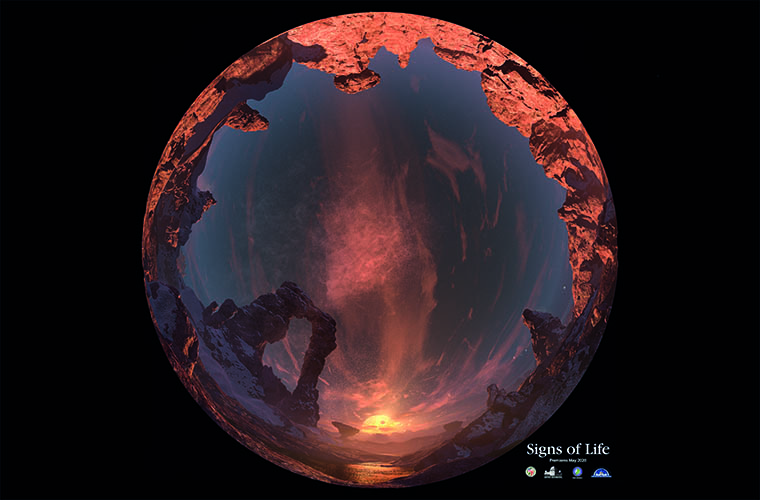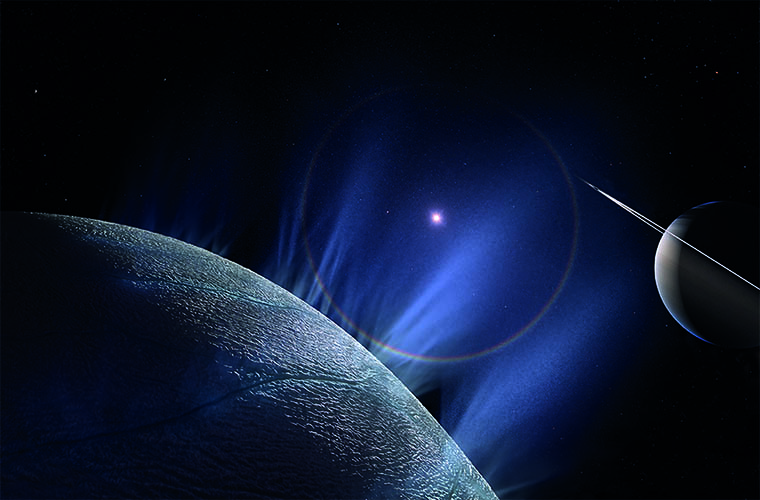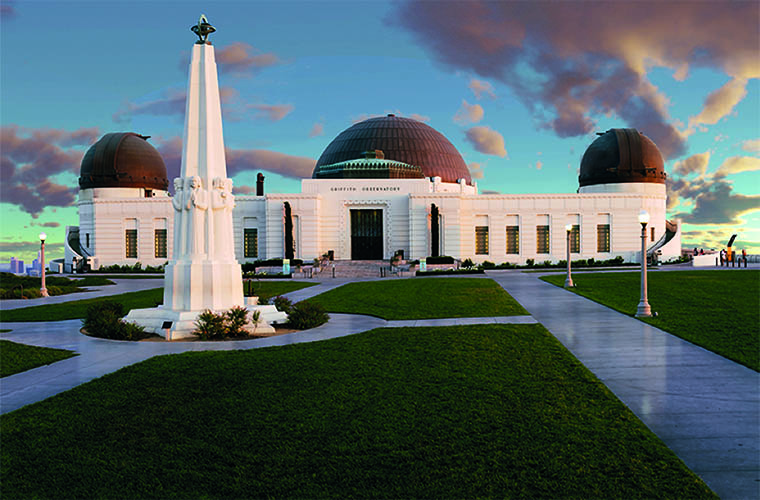Rendering space

Griffith Observatory finds a rendering solution in AWS Thinkbox for its latest Planetarium show, Signs of Life
The planetarium at Griffith Observatory has come a long way since Jim and Plato sought refuge in its seemingly endless night sky back in the 1955 youth-gone-wild melodrama, Rebel Without a Cause. They watch a presentation called A Trip to the Moon, featuring zodiac constellations and the destruction of the universe, which is coupled by sound effects, flashing blue lights and dissonant strings to simulate a world destroyed “in a burst of gas and fire”. And, although Jim and Plato are stunned by the explosion, it is irrefutably linked to the film’s underlying message of man’s small existence – and not the special effects.
 The latest show in the Samuel Oschin Planetarium, Signs of Life, has a very different delivery. It is a fusion of art and science, based on what is known about the universe and cinema. Producers Bob Niemack and Dawn Fidrick have pledged to “stay true to the science while creating an emotional cinematic experience”.
The team behind the show spent a few years developing its script along with 3D previs, before launching the highly meticulous task of modelling, texturing and developing 253 CG assets with a variety of 2D and 3D software. Led by VFX supervisor Gee Yeung, the team grew to 20 astronomical artists, who animated, lit and rendered each of the 44 shots that make up the show. “Implementing established tools and workflows from the VFX industry to a dome show was a true growing process. As our studio, pipeline and culture solidified, brilliant and stunning visuals started to become reality and a compelling new planetarium experience in LA emerged,” Yeung says.
The latest show in the Samuel Oschin Planetarium, Signs of Life, has a very different delivery. It is a fusion of art and science, based on what is known about the universe and cinema. Producers Bob Niemack and Dawn Fidrick have pledged to “stay true to the science while creating an emotional cinematic experience”.
The team behind the show spent a few years developing its script along with 3D previs, before launching the highly meticulous task of modelling, texturing and developing 253 CG assets with a variety of 2D and 3D software. Led by VFX supervisor Gee Yeung, the team grew to 20 astronomical artists, who animated, lit and rendered each of the 44 shots that make up the show. “Implementing established tools and workflows from the VFX industry to a dome show was a true growing process. As our studio, pipeline and culture solidified, brilliant and stunning visuals started to become reality and a compelling new planetarium experience in LA emerged,” Yeung says.
It takes a phenomenal amount of processing power to create CG imagesAttached to the Satellite studio is a small building that was constructed specifically for this project in 2017. Affectionately named the Mini Moon, it hums round the clock with electricity and an ample supply of air conditioning to house the team’s render farm, which is the infrastructure made up of computers, cables, servers and digital storage. The render farm was designed with support from GPL Technologies in Burbank, CA, and maintained by show production technology administrator, Benjamin Roudenis. The team renders 8192×8192 dome masters, which are fisheye lens images projected on to the planetarium’s 76-foot dome-shaped screen via six Christie Boxer projectors. The Zeiss Universarium Mark IX star projector steals the show when it rises from the centre of the planetarium to illuminate the dome with its highly impressive optical LED-illuminated starfield.
Star scaling
It takes a phenomenal amount of processing power to turn the visual effects artists’ work into beautifully rendered CG images, so it was essential the team had a rendering management system that could easily integrate with the digital content creation applications alongside Autodesk’s Shotgun pipeline tools and and be flexible to scale as the Mini Moon’s rendering capabilities expanded. The team opted for AWS Thinkbox Deadline, which is a rendering management system that enables render farms to extend on-premises rendering to AWS, and scale rendering workloads to hundreds, or even thousands, of cores in minutes. Roudenis states: “The engineers at Thinkbox have provided us with a high level of expertise and support for Deadline and understand its crucial role in our production pipeline.” Since 2017, the team has submitted 16,013 jobs, which included 5,991,632 tasks that produced 31,243,872 frames for the 34-minute Signs of Life show. Yeung boasts that: “Deadline has been instrumental in orchestrating the data, tasks and render nodes into a symphony, which we use to compose our melody of pixels.” As a result of this efficiency, the team at Griffith Observatory’s Satellite studio concluded that AWS Thinkbox Deadline would be its “central hub for all things rendering in the future”.Crafting the cosmos
Art director and well-known astronomical artist Don Dixon reveals some challenges presented by the tricky canvas on which the dome masters are projected. He explains that, because every square inch of the dome receives light from every other part, “a cross-bounce effect occurs and reduces the contrast of an image so drastically that it appears submerged in a grey fog”. To correct this, Dixon and Yeung take a chiaroscuro approach to compositing shots. Critical elements are immersed in pools of light, and environment and background elements are kept in relative darkness. Spacing out: Griffith Observatory now has a ‘Mini Moon’ to house a render farm for its CG content
The 180° fisheye lens can also be problematic. The camera has to be close to an object for it to look big in the dome, but as the camera gets closer to an object – such as a planet – the surface nearest the camera begins to bulge forward and creates a strange effect that makes it look smaller than desired. One solution for this, Dixon reveals, “is to use a field of view greater than 180°”, which has the effect of lifting parts of the landscape that would normally be out of sight below the base of the dome into view, so the horizon fills the dome even behind the audience to create “a feeling of vastness”.
The team at the Griffith Observatory says it has found the perfect render management solution in AWS Thinkbox and looks forward to presenting the results at the premiere of Signs of Life in May 2020.
This article first appeared in the January 2020 issue of FEED magazine.]]>
Spacing out: Griffith Observatory now has a ‘Mini Moon’ to house a render farm for its CG content
The 180° fisheye lens can also be problematic. The camera has to be close to an object for it to look big in the dome, but as the camera gets closer to an object – such as a planet – the surface nearest the camera begins to bulge forward and creates a strange effect that makes it look smaller than desired. One solution for this, Dixon reveals, “is to use a field of view greater than 180°”, which has the effect of lifting parts of the landscape that would normally be out of sight below the base of the dome into view, so the horizon fills the dome even behind the audience to create “a feeling of vastness”.
The team at the Griffith Observatory says it has found the perfect render management solution in AWS Thinkbox and looks forward to presenting the results at the premiere of Signs of Life in May 2020.
This article first appeared in the January 2020 issue of FEED magazine.]]>











